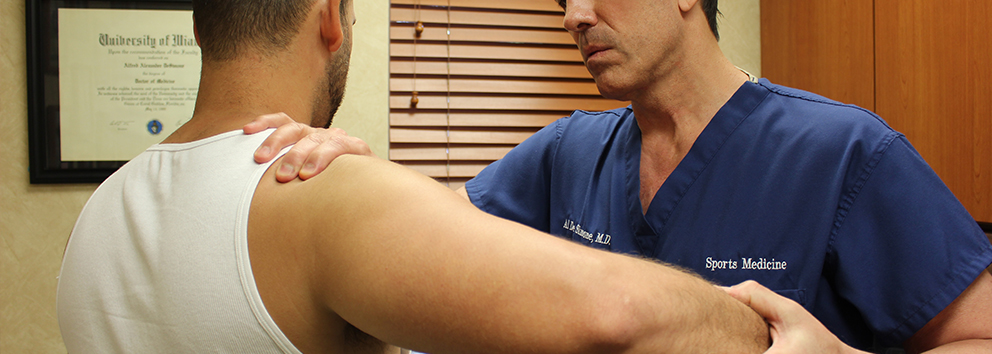
Rotator cuff tendinitis is also related to bursitis and impingement. There are different descriptions for shoulder pain. When the rotator cuff becomes inflamed, it makes it painful to lift and use your arm. The bursa may also become inflamed, cause pain at rest, and increased pain with movement. When you lift your arm out to the side, this narrows the area between the rotator cuff, bursa, and acromion. This is called “impingement”. People describe lateral arm pain with reaching, lifting, and loading
Diagnosis is based on the patient’s symptoms and careful physical examination provided by your physician. Specific physical examinations can determine whether you have rotator cuff tendinitis, bursitis, impingement, or a combination of all three. X-rays are obtained to evaluate the scapula, glenohumeral joint, proximal humerus, and the clavicle. Spurs, arthritis and calcific deposits may also be see on an x-ray. An MRI may be obtained if you have persistent symptoms
Treatment usually consists of initial conservative care with icing, anti-inflammatories, and activity restrictions with avoidance of overhead reaching and loading activities. Physical therapy and stretching may be in hand. An injection to the shoulder may be considered if symptoms persist. Sometimes an arthroscopy is warranted for persistent symptoms that do not improve with conservative care.





